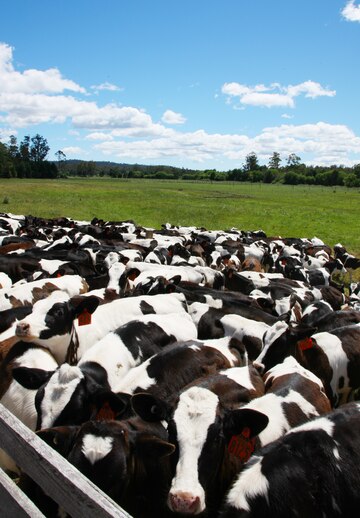Effective dairy herd management is the cornerstone of a successful dairy farming operation. With the integration of modern tools and technologies, farmers can streamline processes, improve herd health, and boost milk production. Establishing a robust management system requires strategic planning and the adoption of innovative solutions. Here are steps to help you set up a dairy herd management system using modern tools.
1. Assess Your Current Operation
Before implementing any changes, evaluate your current management practices. Identify areas where improvements are needed, such as:
- Tracking animal health records.
- Monitoring milk production.
- Feeding schedules and nutrition plans.
- Breeding programs.
Understanding your farm’s specific challenges and goals will help you choose the right tools and systems.
2. Invest in Herd Management Software
Herd management software is the backbone of a modern dairy operation. These platforms allow you to centralize and analyze data for better decision-making. Key features include:
- Animal Health Monitoring: Record and track health histories, vaccination schedules, and treatments.
- Milk Production Tracking: Monitor daily yields for each cow, identify trends, and detect anomalies.
- Breeding Management: Schedule and track artificial insemination or natural breeding cycles to optimize herd reproduction.
- Analytics and Reporting: Generate insights on herd performance, helping you identify areas for improvement.
Popular options include DairyComp, Uniform-Agri, and BoviSync.
3. Implement Automated Milking Systems
Automated milking systems (AMS), also known as robotic milking systems, have revolutionized dairy farming. These systems offer:
- Increased Efficiency: Milking is faster and requires less labor.
- Improved Animal Welfare: Cows can be milked on demand, reducing stress.
- Real-Time Data Collection: Track milk yield, composition, and somatic cell count for each cow.
Although the initial investment can be high, AMS often leads to significant long-term savings and productivity gains.
4. Adopt Precision Feeding Technology
Feeding represents one of the largest costs in dairy farming. Precision feeding technology ensures that each cow receives the right amount of nutrients based on its age, weight, and production stage. Tools to consider include:
- Automated Feed Mixers: Accurately prepare and distribute feed rations.
- Smart Feeders: Monitor individual cow consumption and adjust portions as needed.
- Feed Analysis Tools: Test the nutritional value of forage and other feed components to optimize diets.
5. Use Health Monitoring Devices
Modern health monitoring tools can detect issues early, reducing veterinary costs and improving overall herd health. Examples include:
- Wearable Sensors: Devices like pedometers and collars track activity, rumination, and temperature to identify signs of illness or heat stress.
- Thermal Imaging Cameras: Detect inflammation or injuries in cows without physical contact.
- Automated Calf Feeders: Ensure young animals receive adequate nutrition and monitor their growth rates.
6. Integrate Breeding Management Tools
Efficient breeding is key to maintaining a productive dairy herd. Advanced tools help farmers optimize reproduction schedules and outcomes. Examples include:
- Heat Detection Systems: Sensors and monitors identify cows in heat with high accuracy.
- Genetic Testing Kits: Select cows with desirable traits for breeding to improve milk production and herd health.
- Artificial Insemination (AI) Equipment: Enhance the success rate of breeding programs.
7. Leverage IoT and Data Analytics
The Internet of Things (IoT) enables real-time monitoring and data collection across your operation. IoT devices connect milking machines, feeders, and sensors to a centralized system, providing actionable insights. Benefits include:
- Improved Decision-Making: Analyze patterns in milk production, feeding, and health.
- Proactive Management: Address issues before they escalate, such as detecting lameness or low feed intake.
- Enhanced Efficiency: Automate routine tasks and optimize resource use.
8. Train Your Team
Introducing modern tools requires proper training for you and your team. Ensure everyone understands how to use the equipment and software effectively. Provide ongoing education to stay updated on the latest advancements and best practices.
9. Monitor and Adjust the System
Once your dairy herd management system is in place, regularly evaluate its performance. Use the data collected to identify areas for improvement and make adjustments as needed. Periodic reviews ensure that your system continues to meet the evolving needs of your farm.
Establishing a dairy herd management system using modern tools is an investment in the future of your farm. By integrating technology into daily operations, you can improve efficiency, enhance herd health, and increase milk production. Start by assessing your needs, choosing the right tools, and training your team. With a well-designed system, you’ll be well-positioned to meet the challenges of modern dairy farming and achieve long-term success.







